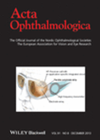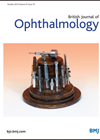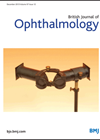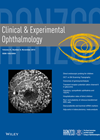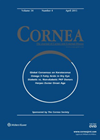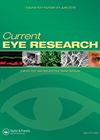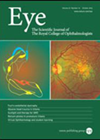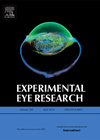
Journal Reviews archive for February 2014
Visual impairment in patients with glaucoma
This retrospective observational study assessed the prevalence of end-of-life visual impairment in patients with glaucoma. A total of 122 deceased patients followed for glaucoma were included and data was collected from patient notes. Sixty-one patients had open-angle glaucoma and 61...
Ocular characteristics in Marfan syndrome
Marfan syndrome (MFS) is a genetic disorder with clinical manifestations associated with cardiovascular, ocular and skeletal organ systems. Typical signs are descending aortic root aneurysms, ectopia lentis, tall stature and scoliosis. This observational study looked at the ocular characteristics, visual...
Mid-term evaluation of the new Glaukos iStent
This is a prospective non-randomised interventional study to assess the efficacy and safety of the Glaukos GTS-400 iStent combined with cataract surgery. The patients enrolled in the study had cataract and primary open angle glaucoma, pseudoexfoliation glaucoma or ocular hypertension....
Morning glory syndrome associated with PHPV
This is a retrospective review of the medical records of 85 eyes / 74 patients diagnosed as morning glory syndrome (MGS) in the clinic between November 2009 and November 2012. Twenty two eyes of 19 patients diagnosed as having MGS...
Secondary intraocular lens implantation in children
This is a retrospective study of the medical records of children under the age of 16 who underwent secondary lens implantation for aphakic corrections after previous congenital cataract surgery over a period between January 2000 and December 2010. The study...
Clinical evaluation of a multifocal aspheric diffractive intraocular lens
This is a multi-centre prospective study involving five different centres in Europe including 52 patients with cataract. The average age was 68.5±10.5 years, 35 females were bilateral implanted with aspheric diffractive multifocal lens implantation of the Tecnis 1-Piece multifocal intraocular...
Mitomycin C versus 5-FU as an adjunctive treatment for trabeculectomy
Antifibrotic agents are used during trabeculectomy (TRAB) to improve long-term surgical success by reducing fibrosis of subconjunctival and episcleral tissue. The purpose of this meta-analysis was to directly compare the efficacy and safety of the two most frequently used antifibrotic...
Corneal keloid: Report of natural history and Outcome of Surgical Management in Two Cases
Corneal keloids are rare and typically reported following trauma (including post-surgical) and has been reported without any trauma or previous surgery. A corneal keloid differs from a hypertrophied scar in that it occurs months/years after the injury, enlarges over time...
Fellow eye comparison of DMEK and PKP
This retrospective analysis of 11 patients who underwent penetrating keratoplasty (PKP) in their first eye followed by descemet membrane endothelial keratoplasty (DMEK) in their second eye studied visual and refractive outcomes. Intra and postoperative complications were compared and a subjective...
Ginko bilboa extract affects hypoxic retinal pigment epithelial cells
Wet age-related macular degeneration (AMD) is characterised by choroidal neovascular membrane (CNVM) formation. It is thought that localised hypoxia within the retina results in overexpression of growth factors such as vascular endothelial growth factor (VEGF), which induces CNVM formation. VEGF...
Chronic drop use and trabeculectomy on tear osmolarity
Ocular surface disease (OSD) is common in patients chronically treated for glaucoma. This may be related to the drug itself but often to the preservatives in the medication. Much work has been done on the most common preservative, benzalkonium chloride...
Enzymatic clearance of anterior chamber infiltrate in uveitis
Aqueous humour (AH) which fills the anterior chamber (AC) of the eye provides nutrients to the cornea and the lens. Clearance of cellular and particular matter from AH is necessary for good visual acuity. In part this is achieved by...

